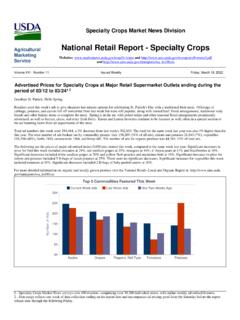Transcription of Impact of the global crisis on Malaysia's financial system
1 BIS Papers No 54 267 Impact of the global crisis on Malaysia's financial system Muhammad bin Ibrahim1 1. Introduction Overall confidence and stability in the Malaysian financial sector has been preserved throughout the period of the global financial crisis , underpinned by a strong financial sector and negligible exposure to subprime-related assets and affected counterparties. Ample liquidity in the financial system also mitigated the risk of systemic contagion, thus allowing the financial sector to continue providing financial intermediation and services to the economy at large.
2 Successful reforms of the financial sector following the Asian financial crisis have further reinforced the strong fundamentals supporting a sound financial sector in Malaysia. As a highly open economy, Malaysia was, however, not insulated from the global economic downturn. The deterioration in global economic conditions and the major correction in commodity prices in the second half of 2008 saw Malaysia s GDP moderate to in the final quarter of 2008. The domestic economy experienced the full Impact of the global recession in the first quarter of 2009, declining by The concerted and pre-emptive measures taken by the Bank Negara Malaysia (BNM)
3 , through the accelerated implementation of fiscal stimulus measures, supported by the easing of monetary policy and the introduction of comprehensive measures to sustain access to financing and mitigate any Impact of the heightened risk aversion among banks contributed towards stabilising the domestic economy in the second quarter and its subsequent recovery in the second half of the year. The economy resumed its growth momentum in the fourth quarter, growing by This resulted in the economy contracting by only in 2009.
4 Continued expansion in domestic demand and increased external demand led to the strong growth of in the first quarter of 2010. 2. Impact of the banking crisis on bank intermediation The financial intermediation process in the Malaysian financial system has remained orderly throughout the period of economic turbulence, with continuing flows of credit to the real economy. Outstanding loans expanded at an annual rate of between July 2007 and July 2009. Similarly, outstanding private debt securities (PDS) grew by 10% annually during this period.
5 The resilience of the banking system , which accounts for of the total assets of the financial system , was a critical factor in ensuring the continued flow of funds into the economy and providing support to borrowers confronting temporary cash flow tightness (Table 1). The level of capitalisation of the banking system in Malaysia was at its highest historical level at the onset of the crisis . Throughout the period 2007 September 2009, the risk- weighted capital ratio (RWCR) and the core capital ratio (CCR) of the banking system in Malaysia remained above and , respectively.
6 Overall profitability as indicated by the return on assets (ROA) and return on equity (ROE) was also maintained at an average of and 1 Bank Negara Malaysia. 268 BIS Papers No 54 in the period 2007 08, subsequently moderating to and 13%, respectively, for the period January September 2009, while remaining in positive territory as business conditions slowed significantly in tandem with the general contraction of the Malaysian economy.
7 During this period, the aggregate credit quality of the banking system s financing portfolios did not experience any significant deterioration. In contrast, total non-performing loans (NPLs) declined by , while the net NPL ratio improved to as at September 2009 from recorded at the beginning of 2007. This can be attributed to the concerted efforts taken by the BNM to enhance the credit risk management infrastructure and underwriting practices in the period following the Asian financial crisis .
8 In addition, banking institutions have been actively managing their balance sheets and asset quality through stringent provisioning policies and write-offs of irrecoverable loans. As a result, the financing loss coverage ratio for the banking system as a whole rose to about 90% of NPLs (2006: ) as at September 2009. Table 1 Banking system : key financial indicators 1996 1997 98 2006 2007 2008 Jan Sep 2009 Number of institutions 89 80 86 42 47 33* 33* Average total assets per institution (USD)
9 11bn Risk- weighted capital ratio Core capital ratio ROA ROE Net NPL ratio Gross NPL ratio Financing loss coverage ratio N/A * including nine domestic banking groups and three foreign banking groups.
10 Source: Bank Negara Malaysia. In general, the Malaysian banking system entered the current global financial and economic crisis from a much stronger position compared to the Asian financial crisis . The consolidation and restructuring of the banking industry together with improvements in the governance structure, risk management framework, infrastructure and practices, as well as the capacity building undertaken as part of the banking sector reforms following the Asian financial crisis , have significantly strengthened the foundations for financial stability.
















![arXiv:1912.13171v4 [eess.IV] 3 Aug 2020](/cache/preview/b/3/f/f/5/8/0/1/thumb-b3ff58013df675611b98352fcd56b3f5.jpg)

